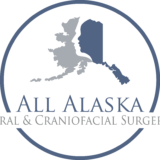What is a facial cleft and why does it occur?
Cleft lip with or without cleft palate is the most common birth difference affecting the face, occurring in 1 in every 600 live births. Clefts of the lip and palate can develop on one or both sides of the face and top jaw and can be complete or incomplete in nature. Initial surgeries directed at lip and palate repair commonly take place at about 3 months and 9-12 months of age, respectively.
Later surgeries may be recommended to address deficient bone in the gumline, speech concerns, jaw position and nasal deformity. The goal of these surgeries is to restore jaw and facial structures, leading to normal function, improved appearance, optimal speech and hearing, healthful nutrition and age-appropriate emotional and psychological development.
 A cleft is a separation of the upper lip and/or the roof of the mouth. In other words, the edges of the upper lip and/or the edges of the roof of the mouth do not grow together normally.
A cleft is a separation of the upper lip and/or the roof of the mouth. In other words, the edges of the upper lip and/or the edges of the roof of the mouth do not grow together normally.
With some exceptions, where a particular syndrome can be identified in conjunction with a facial cleft, most cases of cleft lip and/or palate present as a singular diagnosis, with no other associated birth conditions for the child. Most experts hypothesize that facial clefts result from an intricate interaction of both environmental and genetic factors.
While heredity is known to play a role in the development of cleft lip and/or palate in some patients, this is not always the case, so it isn’t necessarily likely that their offspring will be born with this facial difference.
The benefits of cleft-related surgery
Cleft lip and palate surgery, designed to repair these birth differences in babies, is generally a must-have as the benefits are much more than just cosmetic. They are virtually life-changing.
While parents of a child with a cleft certainly seek surgery to improve their child’s facial appearance, it is important to understand that so much else is at stake for a child with a cleft lip and/or palate. Feeding and, as such, growth and development, can be greatly affected, which is why surgery to address proper oral-facial form and function is integral to the child’s health and well-being.
Difficulty eating for children with facial clefts, for example, results from the child’s inability to create oral suction, generally making breast and bottle feeding much more difficult. Often, the child must be fed with specialized bottles and may still have difficulty eating.
Clefts also affect the shape and function of the nose. During initial lip repair surgery, nasal symmetry and nostril shape are restored and the tissue that separates the nostrils is straightened and lengthened, all contributing to efficient nasal breathing.
Additionally, a palatal cleft that is not properly repaired in a timely manner can greatly affect a child’s speech. As such, the cleft surgeon will make repairs to the palate that will re-establish muscle function in order to promote normal speech.
Other surgeries may also need to be performed later in the child’s life, including ear tube placement, additional surgeries to help with speech, bone grafting to repair the gumline, jaw surgery to improve position of the jaws and teeth and functional rhinoplasty to address nasal form and function.
The cleft surgeon will keep abreast of the child’s growth and development in order to identify when and if these additional procedures will be indicated.
Consultation with a cleft lip and palate surgeon
Because cleft surgery should be completed in a timely manner, early consultation with an appropriately trained pediatric cleft surgeon is necessary. Occasionally the first consultation will occur with expectant parents, after prenatal ultrasound, with subsequent introduction to the child shortly after birth. During the consultation, the surgeon will:
• Examine and evaluate the patient
• Listen to and address the concerns of the parents
• Present options for surgery
• Discuss potential outcomes of the surgery
• Discuss risks associated with surgery and other procedures
• Draw up a final recommended course of treatment
It is so important to know that you and your family are not alone in your journey through cleft treatment. Your child’s surgeon is board-certified and fellowship-trained in pediatric cleft and craniofacial surgical care and is a member of the Providence Alaska Medical Center multidisciplinary cleft team. From the time of your prenatal consult through your child’s final cleft surgery, your specialized care team will assure that your child is expertly taken care of and your family is well-informed.
